Related Research Articles

Margaret Rose Preston was an Australian painter and printmaker who is regarded as one of Australia's leading modernists of the early 20th century. In her quest to foster an Australian "national art", she was also one of the first non-Indigenous Australian artists to use Aboriginal motifs in her work. Her works are distinctively signed MP.
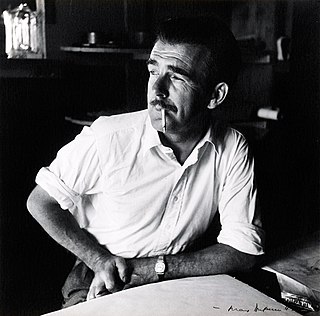
Sir William Dobell was an Australian portrait and landscape artist of the 20th century. Dobell won the Archibald Prize, Australia's premier award for portrait artists on three occasions. The Dobell Prize is named in his honour.

Farm Cove is a tidal inlet and shallow bay in Sydney Harbour, separated from Sydney Cove by Bennelong Point, New South Wales, Australia. Farm Cove is one of the places around Sydney Harbour that has been officially gazetted as a dual named site by the Geographical Names Board (GNB). The official dual name for this place is: 'Farm Cove / Wahganmuggalee'.
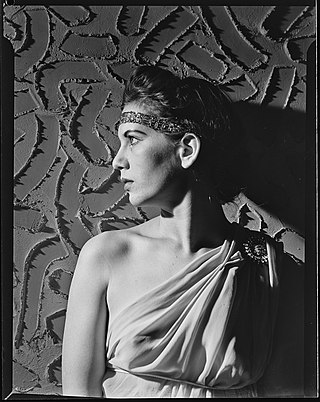
Charmian Clift was an Australian writer. She was the second wife and literary collaborator of George Johnston.

Pearl Mary "Gambanyi" Gibbs was an Indigenous Australian activist, and the most prominent female activist within the Aboriginal movement in the early 20th century. She was a member of the Aborigines Progressive Association (APA), and was involved with various protest events such as the 1938 Day of Mourning. She has strong associations with activists Jessie Street and Faith Bandler.

Marcia Lynne Langton is an Aboriginal Australian writer and academic. As of 2022 she is the Redmond Barry Distinguished Professor at the Melbourne School of Population and Global Health, University of Melbourne. Langton is known for her activism in the Indigenous rights arena.
Barangaroo was a member of the Cammeraygal clan of Aboriginal Australians during the early period of the British colonisation of Australia. She is most well known as being the second wife of Bennelong, who was a pioneering interlocutor between the Aboriginal people and the early British military establishment in New South Wales.
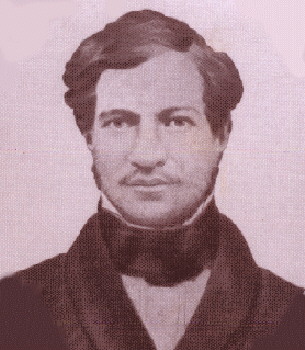
Syms Covington (1816–1861) was a fiddler and cabin boy on HMS Beagle who became an assistant to Charles Darwin and was appointed as his personal servant in 1833, continuing in Darwin's service after the voyage until 1839. Originally named Simon Covington, he was born in Bedford, Bedfordshire, England, the youngest child of Simon Covington V and Elizabeth Brown. After Covington's trip on the Beagle, he then emigrated to Australia and settled as a postmaster, marrying Eliza Twyford there.
The Bondi Surf Bathers' Life Saving Club is Australia's oldest Surf Life Saving Club, founded in 1907. The club was officially established on 21 February 1907 at the Royal Hotel in Bondi Beach, Sydney, New South Wales. The clubs aim is to ensure "No Lives Lost" at Bondi Beach and is a volunteer organisation that patrols Bondi Beach from October to April every year.

Mary Jane Cain (1844–1929) was a community leader, a Gomeroi woman who lived in the Coonabarabran region of New South Wales. She was born in 1844 and was instrumental in the establishment of the Burra Bee Dee Aboriginal Reserve in 1912 and came to be known as the Queen of Burrabeedee or "Queenie Cain".

Megan Jane Davis is an Aboriginal Australian activist and international human rights lawyer. She was the first Indigenous Australian to sit on a United Nations body, and was Chair of the UN Permanent Forum on Indigenous Issues. Davis is Pro Vice-Chancellor, Indigenous, and Balnaves Chair in Constitutional Law at the University of New South Wales. She is especially known for her work on the Uluru Statement from the Heart.

Susan Schardt was an Australian philanthropist who founded an organization to provide care for poverty-stricken people with incurable conditions who had been discharged from the hospital. Canvassing the state to raise funds, she founded the Commonwealth Home for Destitute Invalids in Ryde, New South Wales to offer services to a larger number of patients.
The La Perouse Mission Church is a heritage-listed former church building and now vacant building and unused church located at 46 Adina Avenue, La Perouse, City of Randwick, New South Wales, Australia. It was built from 1894 to 1930. It is also known as Colebrook Memorial Aboriginal Evangelical Church. The property is owned by La Perouse Local Aboriginal Land Council. It was added to the New South Wales State Heritage Register on 15 March 2013.
Esme Russell was an Australian Bidjigal artist and shellworker. Timbery's shellwork had contemporary elements blended with the traditional medium. Her work is in the collections of several art museums throughout Australia.
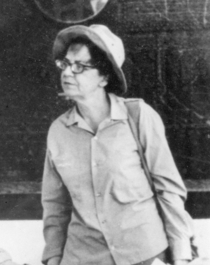
Dorothy Drain was an Australian journalist, columnist, war correspondent, editor and poet. She worked as a journalist with The Australian Women's Weekly for 38 years, with the final five years being as its editor. She was "one of Australia's best-known journalists".

Kameruka and Kamiri were near identical ferries that served on Sydney Harbour. Kamiri was built in 1912 and Kameruka was launched on 8 February 1913. They were double-ended "K-class" steam ferries, a type that was prolific on Sydney Harbour in the early 20th century boom in cross-Sydney Harbour ferry transport before the 1932 opening of the Sydney Harbour Bridge. Kamiri was laid up in 1951 following the New South Wales government take-over of the Sydney Ferries Limited. Kameruka was converted to diesel in 1954 and was laid up in 1984.
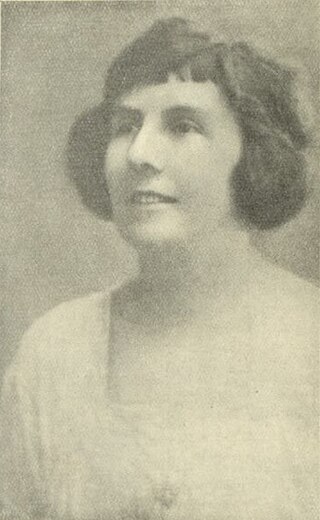
Kathleen M. Butler was nicknamed the "Godmother of Sydney Harbour Bridge" and also known as the "Bridge Girl". As the first person appointed to Chief Engineer J J C Bradfield's team, as his Confidential Secretary,, she managed the international tendering process and oversaw the development of the technical plans, travelling to London in 1924 to supervise the project in the offices of Dornan's, the company which won the tender. At the time it was built, Sydney Harbour Bridge was the largest arch bridge in the world, with the build expected to take six years to complete. Her unusual role garnered much interest in the press in Australia and Britain.

Grace Emily Munro was an Australian World War One volunteer, charity worker, and founder of the Country Women's Association.

Margaret Jane Long was an Australian Baptist missionary who founded the Aborigines Inland Mission of Australia.
Lucy Harriet Eatock born Lucy Wakenshaw was an Australian political activist with the Communist Party of Australia (CPA). She married an aboriginal man named William Eatock and had nine children. She and her children were involved in demonstrations where they received discrimination by the authorities.
References
- ↑ "Life Summary - Emma Jane Callaghan - Indigenous Australia". ia.anu.edu.au. Retrieved 20 September 2019.
- ↑ "An Australian heroine". Australian Women's Weekly (1933 - 1982). 24 April 1968. p. 7. Retrieved 21 September 2019.
- 1 2 Kelly, Shay Ann. "Callaghan, Emma Jane (1884–1979)". Australian Dictionary of Biography . Australian National University . Retrieved 26 August 2019.
- ↑ Power, Julie (19 November 2023). "The 'clever girl' who helped build the Harbour Bridge". The Sydney Morning Herald. Retrieved 19 November 2023.
- ↑ Plaques, Blue (20 November 2023). "New round of Blue Plaques recognises the stories of NSW". Blue Plaques. Retrieved 21 November 2023.